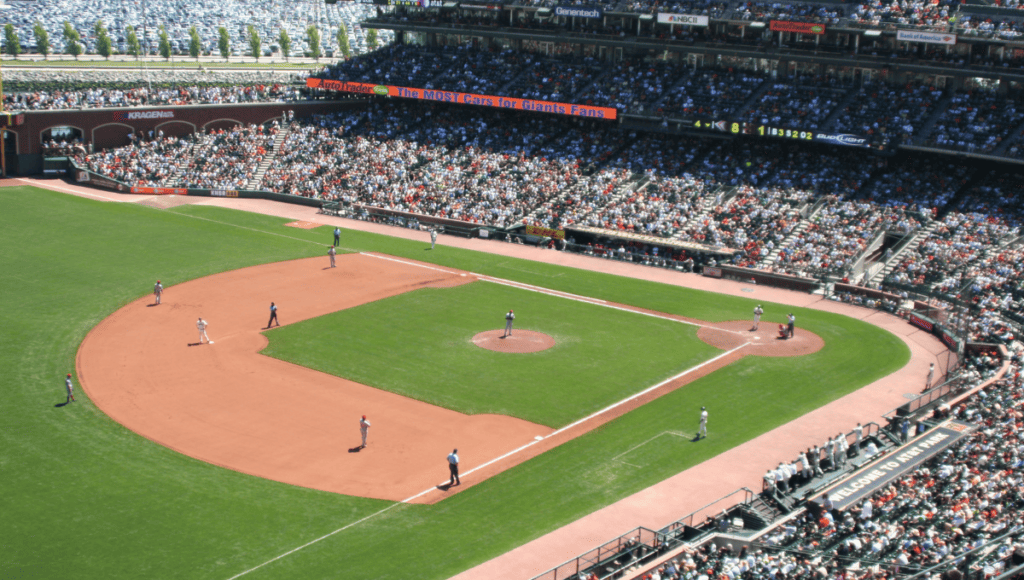Fly Ball Baseball: Mastering the Art of High-Pitched Hits
Fly balls in baseball are an essential aspect of the game that every player and fan should understand. When a batter hits the ball high into the air, it often results in a fly ball, which is commonly seen in baseball games. Outfielders hustle to catch these balls before they touch the ground, and if they manage to do so, the batter is ruled out. Pitchers may strategize to induce soft fly balls, increasing their chances of getting the batter out.

Understanding and successfully catching a fly ball is an important skill for players in Major League Baseball (MLB). To become proficient at it, outfielders must hone their ability to judge the trajectory of the ball and position themselves accurately to catch it. For batters, the ability to hit a fly ball may result in extra-base hits or even home runs, if they can get enough distance on the ball.
However, there are specific rules and regulations associated with fly balls in baseball. One such rule is the infield fly rule, which protects the offense from potential double or triple plays when runners are on first and second bases or on bases loaded, with less than two outs. An umpire calls an “infield fly” when the ball is hit towards the infield area with a chance of being caught using ordinary effort.
Key Takeaways
- Fly balls are commonly seen in baseball and can result in an out when caught by the fielders.
- Proficient outfielders must accurately judge trajectories and positioning in order to catch a fly ball.
- Infield fly rule is an important regulation that protects the offense in specific situations.
Understanding and Catching a Fly Ball
Types of Fly Balls and Their Techniques
There are various types of fly balls that require different techniques for catching:
- Pop fly: This type of fly ball goes high in the air with minimal horizontal motion. To catch a pop fly, focus on tracking the ball and positioning yourself underneath it.
- Line drive: A line drive is a hard-hit ball that travels almost parallel to the ground. To catch one, be prepared to quickly move laterally and maintain your vision on the ball.
- Routine fly ball: These fly balls have standard height and trajectory. Just like with other fly balls, judge the direction and angle, then position yourself accordingly.
Whichever type of fly ball you encounter, remember to use the proper catching technique, which includes running towards the fly ball, tracking it effectively, securing it with your glove hand, and preparing for a quick throw.
Player Positioning and Anticipation
To catch a fly ball effectively, it’s crucial to understand other players’ roles and your own. Outfielders should always be aware of runners on base, while infielders need to position themselves based on the expected trajectory of the batted ball.
As an outfielder, if you find yourself near the wall or fence, make sure to maintain awareness of your surroundings to keep your focus on the ball and avoid collisions.
Additionally, learn to anticipate the direction, angle, and distance of fly balls by paying close attention to the batter’s swing. In some cases, you may also need to utilize a “crow hop” technique to position yourself for an ideal catch.

Practice and Drills
To improve your fly ball-catching skills, consider incorporating the following drills into your practice routine:
- Fly Ball Toss: An assistant tosses fly balls at various distances, heights, and angles for you to catch.
- Tracking Drills: Practice following the flight path of batted balls with your eyes, learning to anticipate their landings.
- Communication Drills: Work with other fielders to practice communicating, calling for the catch, and avoiding collisions.
Remember, practice makes perfect, so consistent training and repetition will help you develop the necessary skills and instincts to catch fly balls effectively.
By focusing on these key elements — mastering different types of fly balls, proper positioning, and consistent practice — you’ll become a more confident and adept player on the field.
Rules and Regulations Related to Fly Balls
Infield Fly Rule
The Infield Fly Rule is essential to understand when playing baseball. This rule is applied when there are fewer than two outs, and there are runners on first and second base, or the bases are loaded1. The purpose of this rule is to prevent the defense from turning an easy double or triple play by deliberately dropping a pop fly in the infield.
To recognize an infield fly, keep in mind these criteria:
- Fewer than two outs.
- Runners on first and second base, or bases loaded.
- A fair fly ball that can be caught by an infielder with ordinary effort.
When these conditions are met, the umpire will call an infield fly, and the batter is automatically out. Baserunners can advance at their own risk, but they are not obligated to do so1.

Outfield Regulations
In the outfield, players need to be aware of specific rules when dealing with fly balls. One of the most crucial aspects is ensuring that an outfielder catches the fly ball before it hits the ground. If the catch is made, the batter is ruled out.
For baserunners, it’s essential to understand the process of tagging up. When a fly ball is caught in the outfield, a baserunner must be in contact with their current base before advancing to the next base. Failing to do so can result in the runner being called out if the defense makes a successful appeal to the umpire2.
Here are some essential rules for baserunners during fly ball scenarios:
- If a fly ball is caught for the third out, baserunners need not tag up.
- Baserunners can freely advance if the ball lands and is not caught by an outfielder.
- Runners should pay close attention to the flight of the ball and position themselves accordingly to increase their chances of advancing safely.
By understanding these infield and outfield regulations, you can improve your knowledge of the game and make better decisions on the field.
